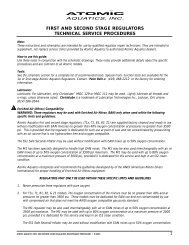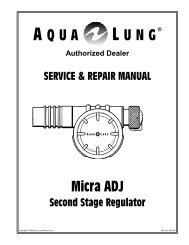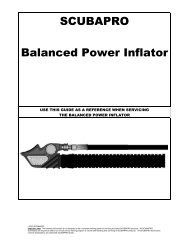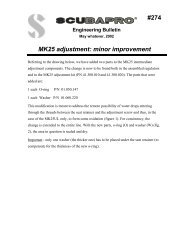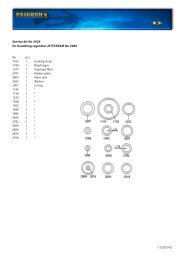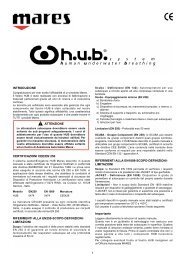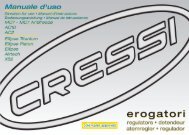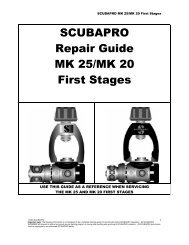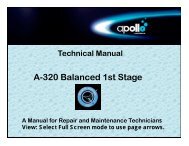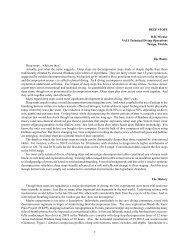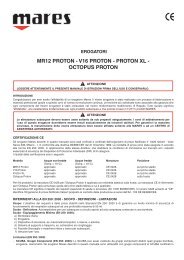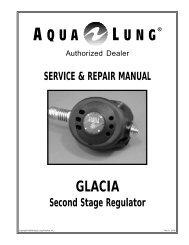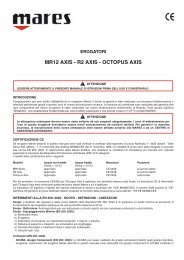XLC 2nd Stage Service Manual.pdf - Aberdeen Watersports
XLC 2nd Stage Service Manual.pdf - Aberdeen Watersports
XLC 2nd Stage Service Manual.pdf - Aberdeen Watersports
You also want an ePaper? Increase the reach of your titles
YUMPU automatically turns print PDFs into web optimized ePapers that Google loves.
<strong>XLC</strong> Second <strong>Stage</strong> <strong>Service</strong> & Repair <strong>Manual</strong> 11Adjustment ProceduresCAUTION: Prior to adjusting and testing the <strong>XLC</strong> secondstage regulator, the accompanying first stage must be correctlyserviced, adjusted to a stable intermediate pressure of135-140 psi, and fully tested. Refer to the appropriate firststage service manual before attempting to perform theadjustment and testing of the Impulse second stage.1. Thread the male fitting of the IP hose into the low pressureport of the first stage, and apply a torque wrench with 17mm(n") crow-foot to tighten to 40 inch-pounds (±2).2. Connect an intermediate pressure test gauge (P/N 1116-10) tothe first stage via a separate low pressure hose.3. Attach the female fitting of the second stage low pressure hoseto the In-Line Adjustment Tool (P/N 1001-95) by mating theswivel nut onto the male threaded end of the tool. Turn theswivel nut clockwise until finger snug.4. Pull back the knob of the tool to retract the adjusting stem,and mate the female threaded end of the tool onto the secondstageinlet fitting. While holding the tool secure, turn thesecond stage clockwise until lightly snug (see Fig. 14).5. Set the vane adjustment switch to the “MIN” position, andconnect the first stage to a filtered air source of 3,000 psi.Fig. 14 – Inline Adjustment Tool ConnectionNOTE: The preferred air source for final tuning and testing isa flow bench with accurately calibrated gauges. If a flowbench is not available, a scuba cylinder may be used, followingthe subjective breathing test provided on page 12.7. Slowly open the valve of the air supply to pressurize theregulator. Press the knob of the inline adjustment tool inward,and gently turn the knob until it can be felt that the adjustmentstem has mated into the slotted head of the crown. Continueto hold the knob inward, in order to prevent it from beingpressed outward by the internal air pressure.a. If airflow cannot be heard, slowly turn the crown outcounter-clockwise only until a very slight leak is present.b. When a slight leak has been established, slowly turn thecrown clockwise in very small increments of adjustmentwhile lightly depressing the lever to cycle the regulator.Pause to listen after each adjustment to determine whetherthe airflow has stopped. It is important to adjust only untilthe airflow has stopped.c. When the airflow is stopped and no leakage can be heardafter cycling the regulator, proceed to adjust the crownfurther clockwise 45 degrees for a primary second stage,or 180 degrees for an octopus. Then, release the knob ofthe inline adjustment tool to ensure that it no longer makescontact with the orifice.© 1999 Aqua Lung America, Inc.



